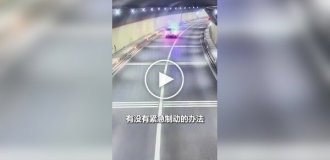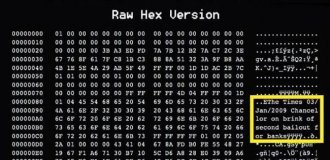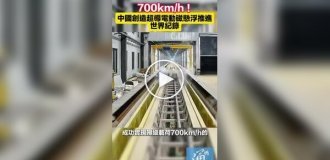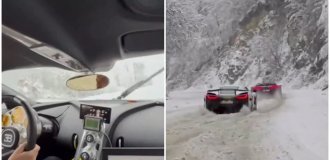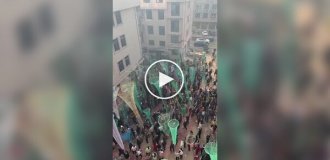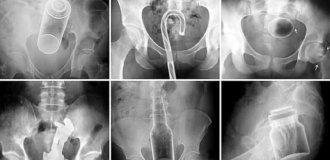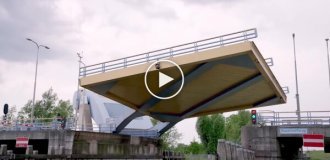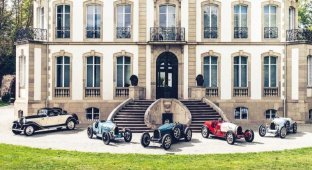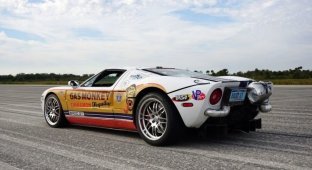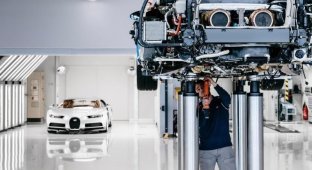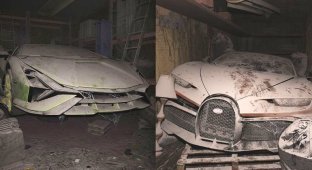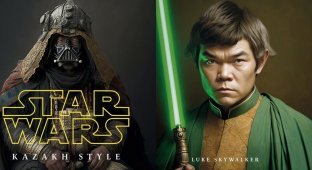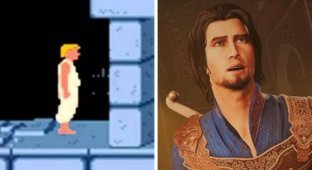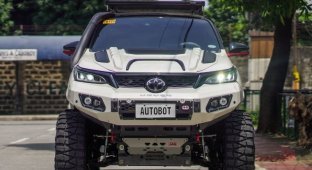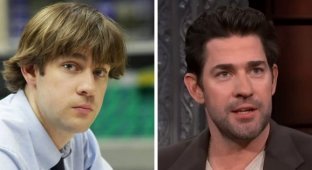Bugatti EB110: Romano Artioli's dream (32 photos)
"Nothing is too beautiful, nothing is too expensive" according to this creed, Ettore Bugatti built the fastest sports car of its time. 
Sunday afternoon September 15, 1991, thousands of French and guests of the country gathered on the Champs Elysees in Paris to become witnessing the rebirth of the legendary French brand Bugatti. Representing a car built for the sole purpose of bringing it back to its former glory the glory of Bugatti, on the day of the 110th anniversary of the founder of the company, Ettore Bugatti, entrusted to the star of French cinema Alain Delon. Already in Italy an ultra-modern plant was built, ready for the production of the fastest stock car of all time. Bugatti EB110 was really amazing imagination!
Presentation of Bugatti EB110 in Paris 
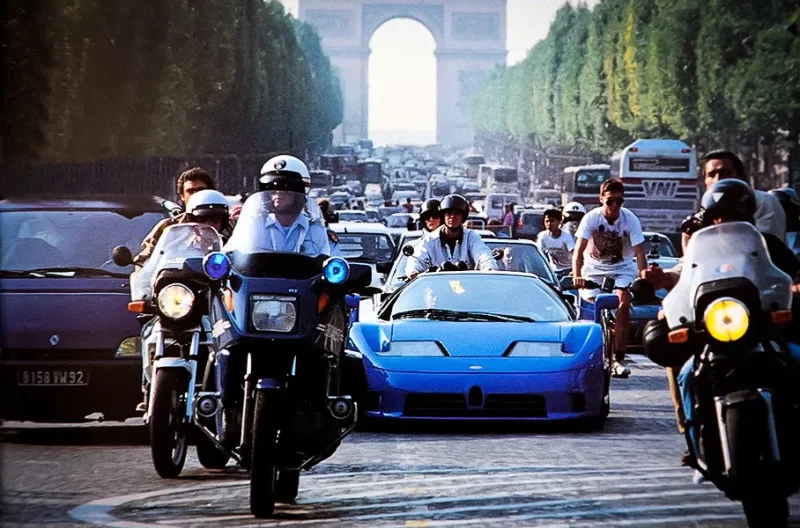
Michael Schumacher chooses yellow for his Bugatti EB110 Super Sport 
Disappeared in devastated post-war France, the brand was resurrected with on a breathtaking scale: international media journalists were amazed performance of the Bugatti EB110, Formula 1 drivers lined up behind supercar in line, plans were being made for Bugatti's triumphant return to Le Mans! The company clearly had a bright future. But no! Crisis phenomena in the economy of the early 1990s were felt not only in post-Soviet space and the Bugatti plant closed its doors again in 1995 year.
Bugatti EB110 GT 1994 
Retractable rear wing! 
Today, Bugatti can be considered a German car - the brand belongs to the Volkswagen Group and it was the Germans who were able to bring the incredible Veyron project before production, in the early 2000s, showing the world a hypercar 1001 horsepower with a top speed of over 400 kilometers per hour. And this is not entirely fair, because for the first time to breathe Italian Romano Artioli tried to make a new life in Bugatti. France, Italy, Germany is a real European cosmopolitanism! 
By the early 1980s, Romano Artioli, who from his youth dreamed of reviving Bugatti, was the largest Italian dealer for Ferrari, as well as… Suzuki. The Italian had sufficient means, connections and the ability to inspire people, which allowed Artioli to buy the rights to the legendary brand from the French Government and in 1987 to establish a company Bugatti Automobili S.p.A. 

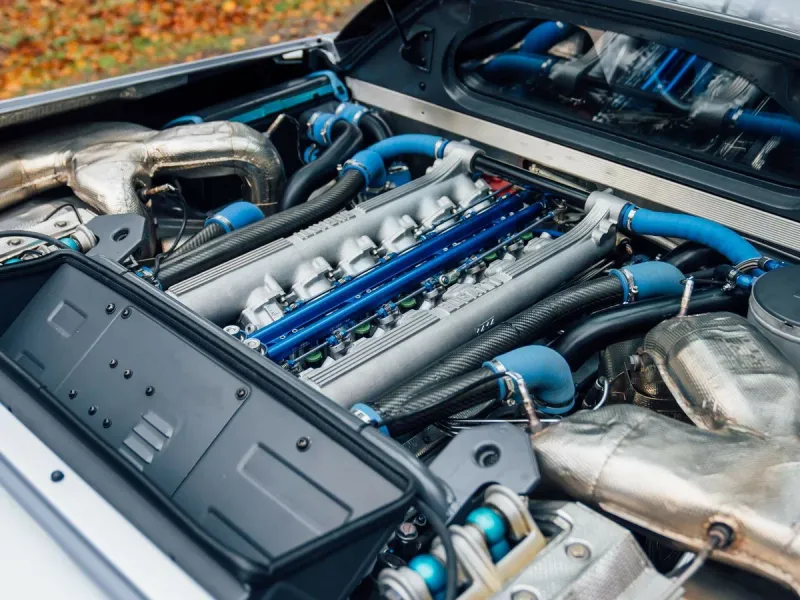

Previously, everyone had a set of tools;) For some reason, there is no hammer... 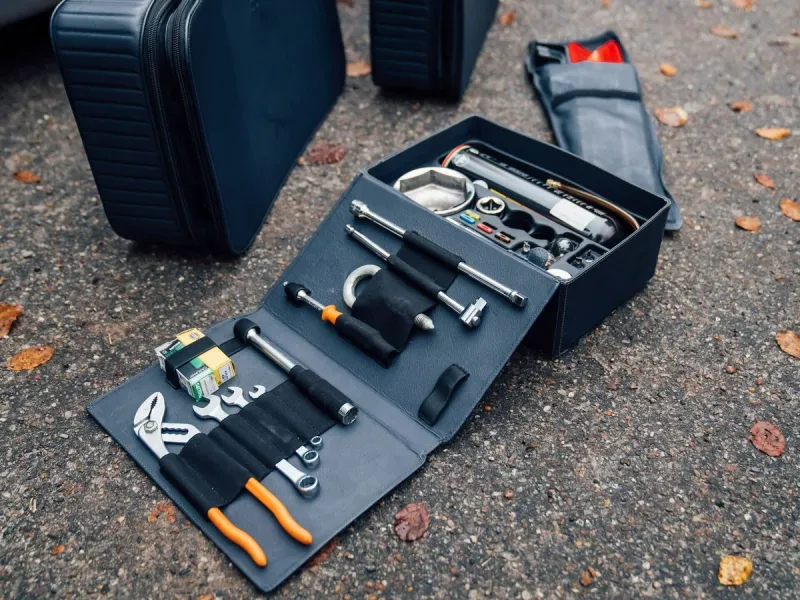
The historic Bugatti factory, like the current one, was located in Molsheim (France), but Artioli considered that the region of Emilia-Romagna (homeland Italian supercars) will be the best place for ultra-modern enterprises. Literally "behind the fence" produced Ferrari supercars, Maserati, De Tomaso and Lamborghini. Great place and yes attract specialists in this "valley of supercars" was clearly not difficult. Fabbrica Blue (literally - "Blue Factory". Blue is the official color of France in motorsport) was an ultra-modern factory, with design studio, engine test bench, testing ground, showroom. The round windows of the main building were equipped with automatic blinds that react to the position of the sun, providing maximum illumination inside the production premises. The marble floors and the restaurant completed the picture... symbolism: Artioli bought an old wooden door from a historic factory and installed in a new one! The factory opened on September 15, 1990.
Read the article "Abandoned Bugatti factory" 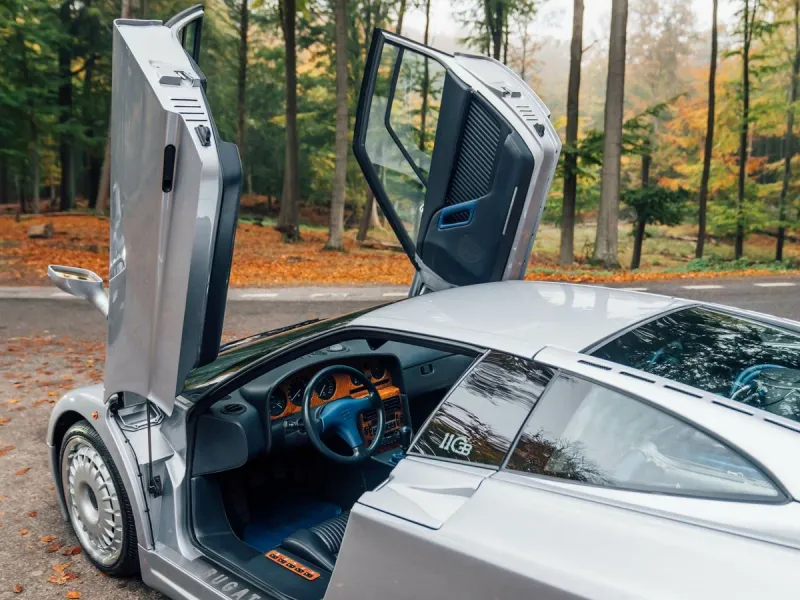
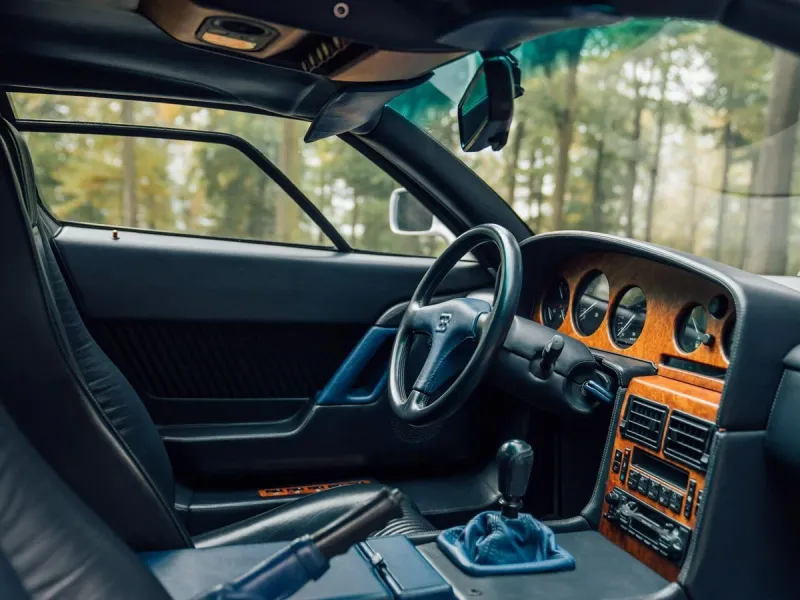

No touch screens. Old school! 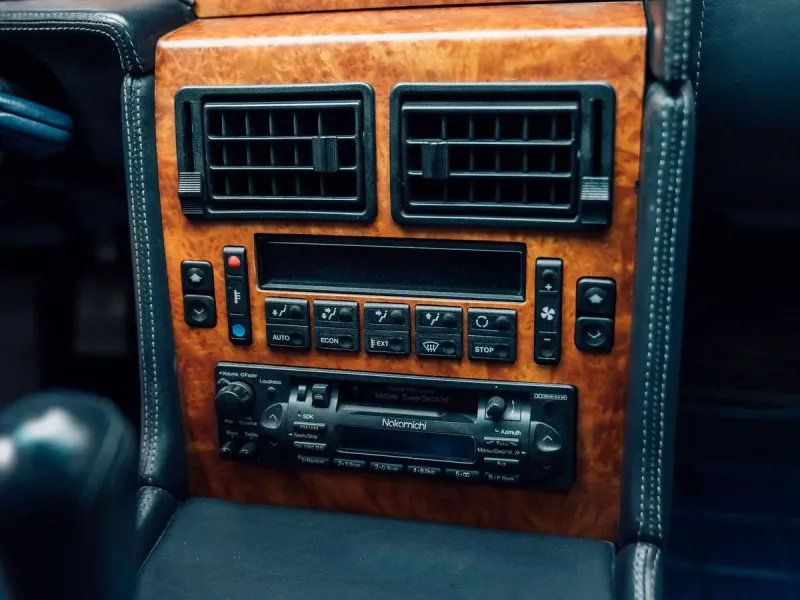
For the development of the car, with the support of Ferruccio Lamborghini, it was possible attract the best professionals. Design options developed by Giorgetto Giugiaro, Nuccio Bertoni and Marcello Gandini, and were engaged in engineering people from Lamborghini. The final choice fell on the style Gandini, who previously designed the Mamborghini Miura and Countach. Necessary strength characteristics for the monocoque EB110 had only carbon fiber, but in the automotive industry, no one material did not master the future. This unfortunate fact led Bugatti to partner with French aerospace company Aerospatiale, which worked among other things over the supersonic liner Concorde. 
The monocoque weighed only 126 kg, and the body was a mixture of carbon fiber, aluminum and plastic, the wheels were cast from magnesium alloy, and the screws and bolts were titanium! Tires are specially designed for Michelin, oil in Elf, and sound system in Nakamichi.
Bugatti EB110 GT 1994 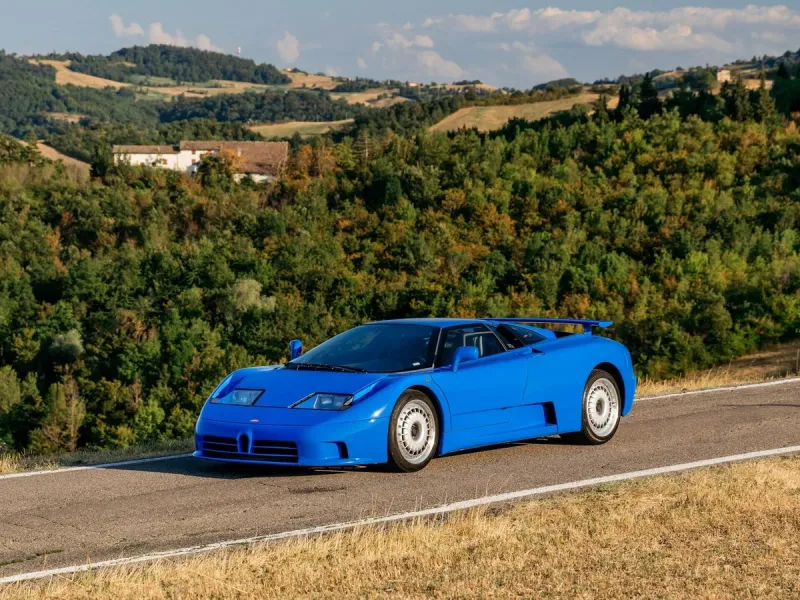


The highlight of the EB110 was the engine: the 3.5-liter V12 had 5 valves per cylinder and four turbochargers. Spinning to dizzying 8250 rpm, the motor produced 560 horsepower in the standard and 610 in the later Super Sport. To curb this herd of horses used an all-wheel drive system with a viscous coupling and rear self-locking differential (torque distributed in ratio of 27 to 73 in favor of the rear wheels). All this was completed six-speed "mechanics" developed by Porsche engineers! 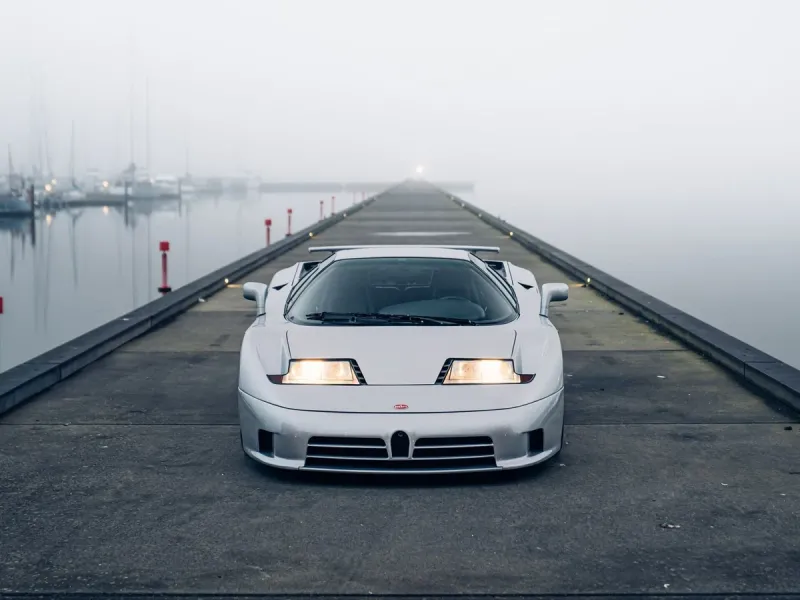

Incredible power for the early 1990s made it possible to loudly declare car. Up to 100 km / h, the EB110 accelerated in 3.3 seconds and developed top speed of 342 km/h, making it the fastest car of his time. Several world speed records have been set including The EB110 became the fastest production car on the ice. Records continued in the economic plane: EB110 cost a quarter more Ferrari F40 was the most expensive production car in the world! Before the appearance of the McLaren F1...
Picture from a parallel universe: Bugatti EB110 at a gas station... 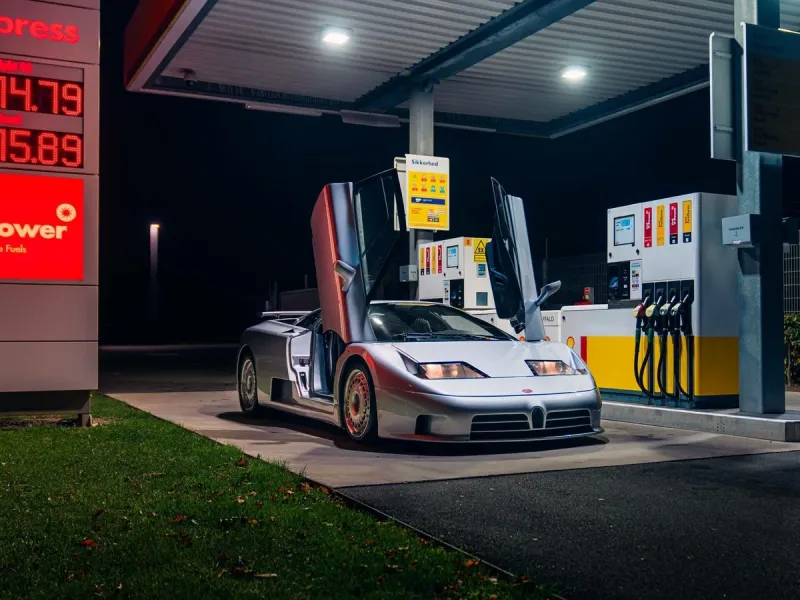
Second the Bugatti model was to be a super-sedan with sensational dynamic characteristics, spent on the development of the car huge money, which caused the collapse of Bugatti ... After 4 years production company went bankrupt. Managed to release only 128 road cars and 2 racing cars. Since then, Bugatti has built 450 Veyrons and Chiron will be released in the amount of 500 units, which makes the Bugatti of the era Artioli is a much rarer supercar. 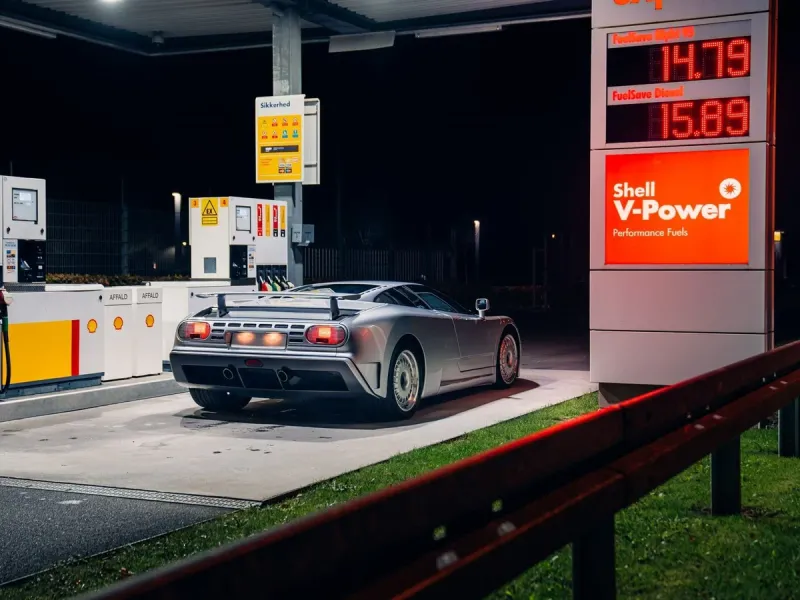
Buying an EB110 today is very expensive, 1.5-2 million dollars is not the limit. But what charisma! 
